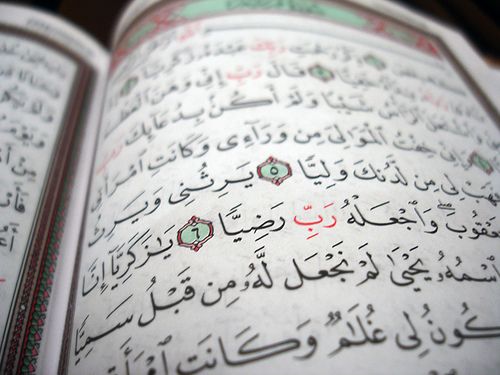 Nobody doubts that religion plays a big role in the Iraq War. Yet few reporters, or at least the ones I have read, have shown the extent to which religion plays a role in the conflict.
One reporter who did is Kim Gamel of the Associated Press, who wrote about how the U.S. military dealt with an American soldier who used a copy of the Quran as target practice.
Nobody doubts that religion plays a big role in the Iraq War. Yet few reporters, or at least the ones I have read, have shown the extent to which religion plays a role in the conflict.
One reporter who did is Kim Gamel of the Associated Press, who wrote about how the U.S. military dealt with an American soldier who used a copy of the Quran as target practice.
The point of the story -- the U.S. military will have nothing to do with offenses aimed at the Islamic faith -- was familiar enough. But Gamel's details were not:
Iraqi police found the bullet-riddled Quran with graffiti inside the cover on a firing range near a police station in Radwaniyah, a former insurgent stronghold west of Baghdad, U.S. military spokesman Col. Bill Buckner said.
American commanders launched an inquiry that led to disciplinary action against the unidentified soldier, who has been removed from Iraq, Buckner said.
Members of the local U.S.-allied group said the Quran was found with 14 bullet holes in a field after U.S. troops withdrew from a base in the area.
Sheik Ahmed Khudayer al-Janabi, a local tribal leader, said the group had planned a protest march last Thursday but called it off under pressure from U.S. forces and to prevent any insurgent violence as retaliation.
The incident, which occurred on May 9 and was discovered two days later, was first reported by CNN, which broadcast a ceremony at which the top American commander in Baghdad apologized to tribal leaders Saturday in Radwaniyah. The military confirmed the details Sunday in an e-mailed response to a query.
"I come before you here seeking your forgiveness," Maj. Gen. Jeffery Hammond was quoted as saying at the ceremony. "In the most humble manner I look in your eyes today and I say please forgive me and my soldiers."
"The actions of one soldier were nothing more than criminal behavior," he added. "I've come to this land to protect you, to support you -- not to harm you -- and the behavior of this soldier was nothing short of wrong and unacceptable."
The commander also read a letter of apology by the shooter, who has not been identified, while another military official kissed a Quran and presented it to the tribal leaders, according to CNN.
Gamel's description was novelistic and arresting: the bullet-ridden Quran with graffiti marked inside; a U.S. military official kissing the Quran. By using such sensory images, Gamel conveyed to readers the significance of religion in the war.
Imagine if the reporter had simply written that the U.S. shot the Muslim's holy book or apologized to Sunni representatives. The description would not have been nearly as effective.
My only quibble with the story was the absence of an account of the disgraced sniper's point of view. Why did the shooter decide to let 'er rip against the Quran? Was there an incident that caused the soldier to fire away? If the sniper was unavailable for comment, which I imagine was the case, Gamel should have said.
That's a minor criticism, however. Gamel used key details to fine effect.
(Photo by Flickr user Qatari Mother used under a Creative Commons license.)
